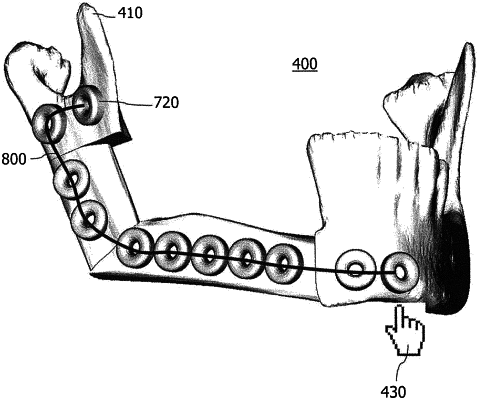| CPC A61B 34/10 (2016.02) [A61B 17/80 (2013.01); G06F 30/00 (2020.01); G06T 19/20 (2013.01); A61B 2034/105 (2016.02); G06T 2219/2021 (2013.01)] | 15 Claims |

|
1. A method of designing a bone plate having at least one plate segment, the method comprising: visualizing a virtual bone model on a display device, the virtual bone model being based on patient-specific shape data of a bone; pre-operatively deriving plate design data representative of a plate-specific design property using the virtual bone model, wherein deriving the plate design data comprises: selecting at least a first point and a second point on the virtual bone model, the first point being representative of a center position of a first section of the bone plate and the second point being representative of a center position of a second section of the bone plate; and creating a curve on the virtual bone model, the curve at least interconnecting the first point and the second point and being representative of a length of the at least one plate segment; and generating a data set that geometrically defines the bone plate from at least the derived plate design data and one or more generic plate parameters, wherein the derived plate design data or the one or more generic plate parameters comprises a number of fixation openings of the bone plate;
wherein the data set that geometrically defines the bone plate is derived or generated at least in part based upon the patient-specific shape data of the bone and, wherein the patient-specific shape data is provided in scaled form and the data set that geometrically defines the bone plate is derived to inherit the scaling of the patient-specific shape data.
|